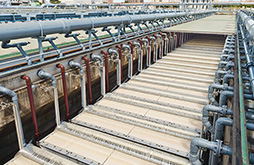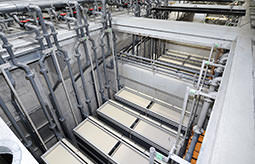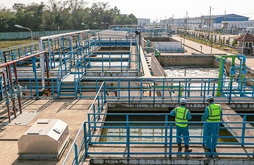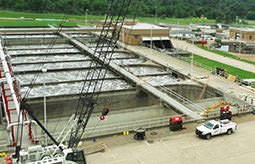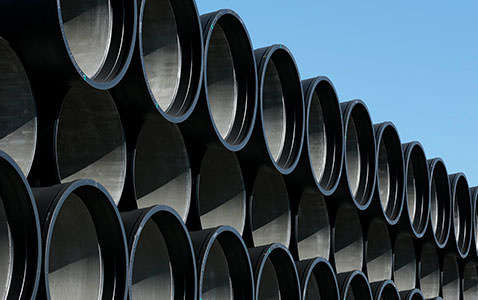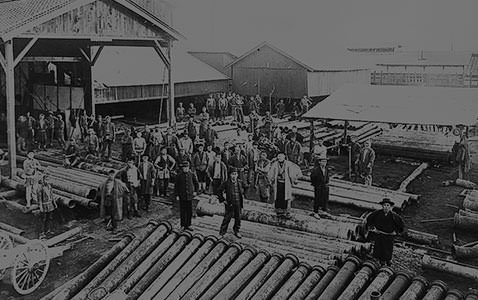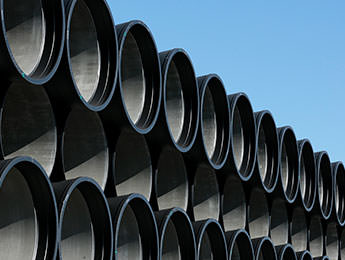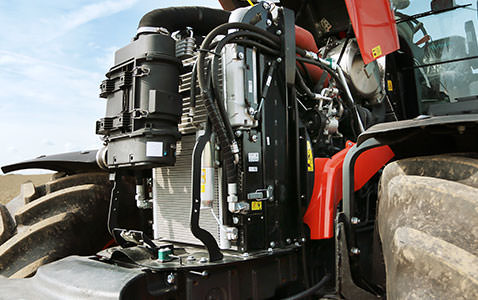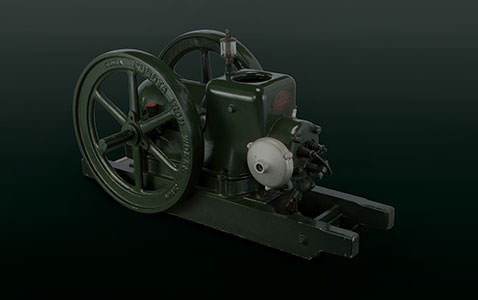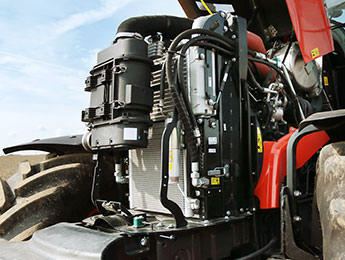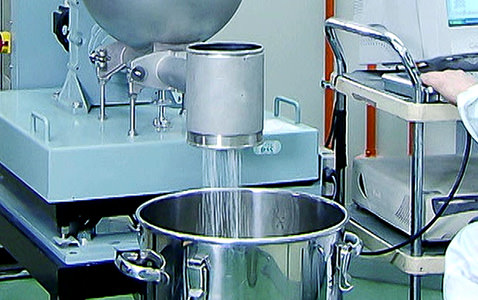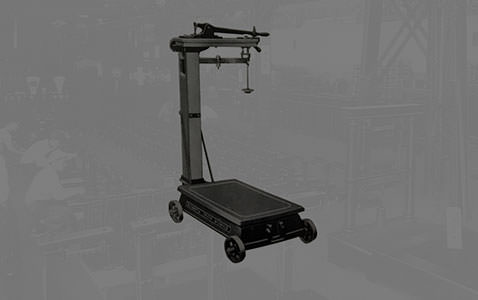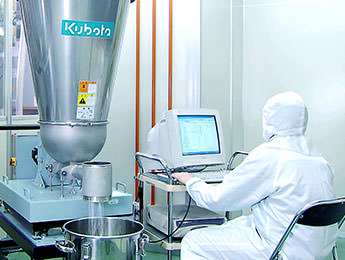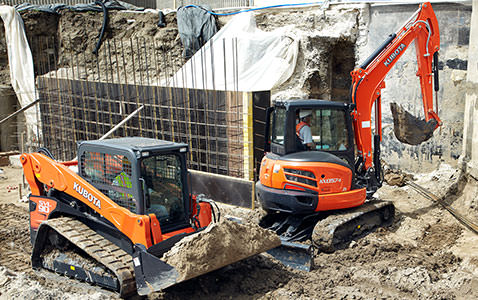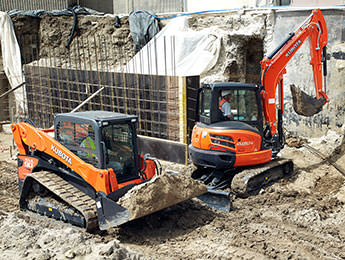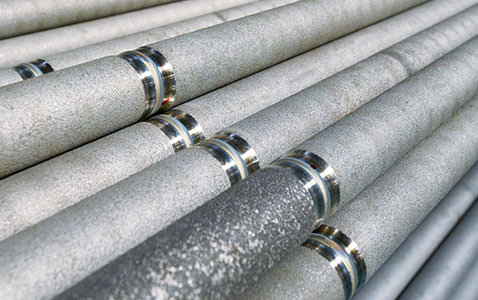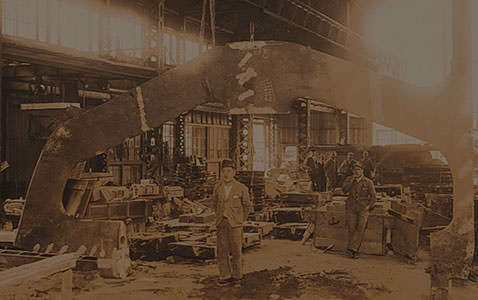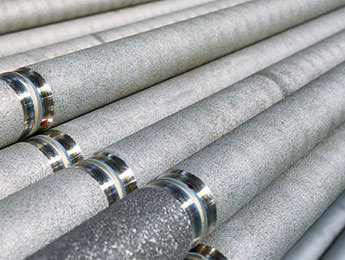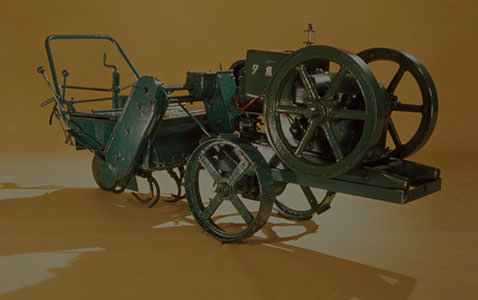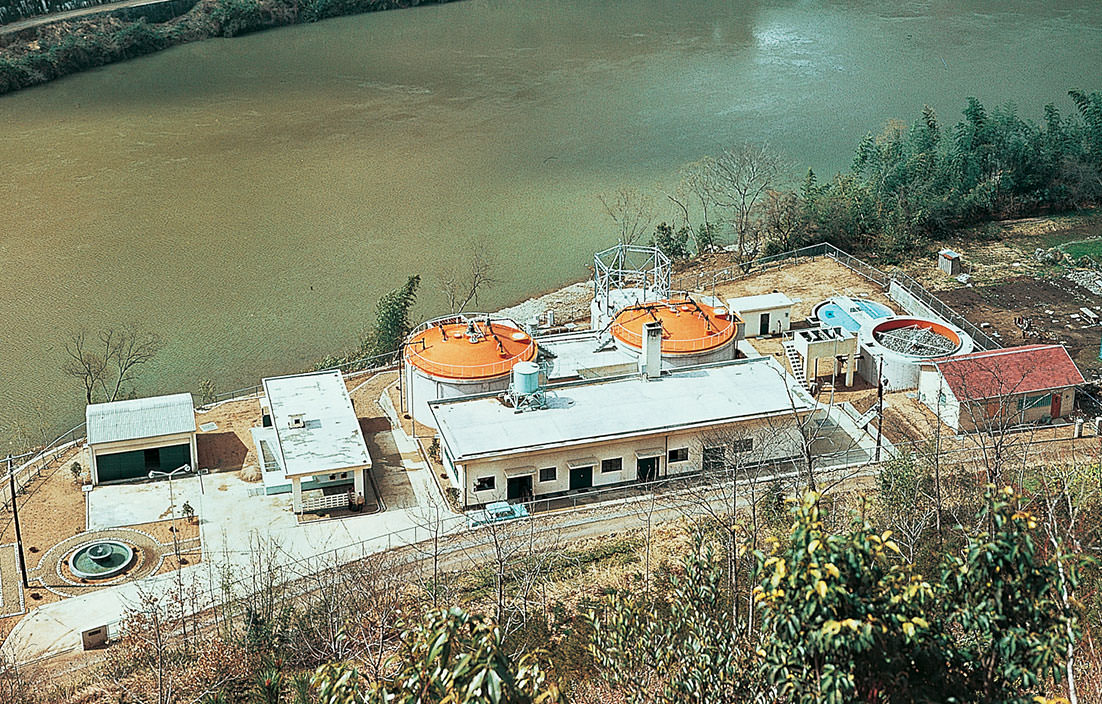
1950-1960s
Giving Back to the Water Industry.
Kubota’s Water Treatment Business Begins
Sewage Treatment Plant, Wastewater Treatment Plant, Refuse Incinerator
The sewage treatment plant in Miyoshi, Hiroshima, which was the department’s first project after it was established
The rapid development of the industry and concentration of population in urban areas caused shortages of drinking and industrial water as well as pollution of the rivers and ocean. Kubota, which had been supported by the water industry through its iron pipe business, keenly felt the necessity of solving these water issues, founded a facility dedicated to water research, and embarked on the water treatment business.
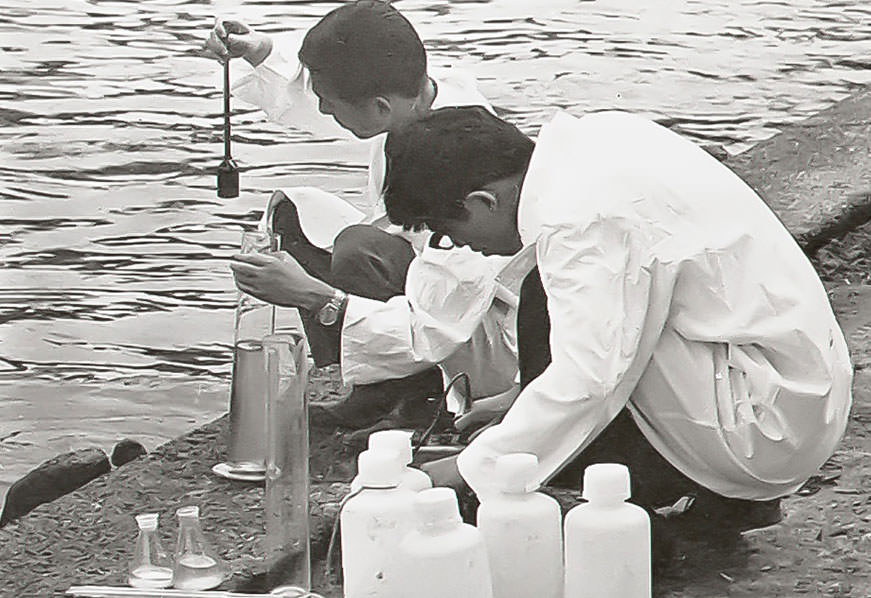 Conducting water quality survey at Nakanoshima, Osaka
Conducting water quality survey at Nakanoshima, Osaka
Promoted Research on Water Supply and Wastewater as Well as Waste Treatment in Order to Sustain the Rapidly Transforming Living Environment
Around 1958, when the Water Quality Control Law and Industrial Effluent Control Law were established in Japan, Kubota began research and development in the area of water treatment technology, training technicians in order to improve the environmental infrastructure of urban areas. In addition, in order to repay its debt of gratitude to the water business industry, which it had a deep connection with for 70 years since its founding, Kubota established a waterworks research laboratory fully equipped with various facilities, including measuring, analyzing and testing devices. The laboratory conducted research on topics such as purifying river and underground water for drinking and industrial use, treating sewage/industrial wastewater in order to prevent pollution, and treating exhaust and urban solid waste, etc.
Using Research Results from the Waterworks Research Laboratory for Business Application. Kubota Invented New Treatment Methods and Devices, Advancing the Development of Water Treatment Technology
The waterworks research laboratory presented its research results in Kubota’s professional journal and widely offered them to relevant academic societies and national and public institutions. In 1962, based on the lab’s research results, Kubota founded the Environmental Equipment and Plant Engineering Division and officially entered the field of environmental infrastructure development. Different from other Kubota businesses, it started off as a software and technology based division without a plant, which processed work orders and undertook the design and construction of night soil and sewage treatment facilities. As the government intensely promoted the development of environmental infrastructure, including wastewater treatment, the business started off well. It later on developed such new methods and devices as the water-saving,non-diluted aerobic human waste treatment system.
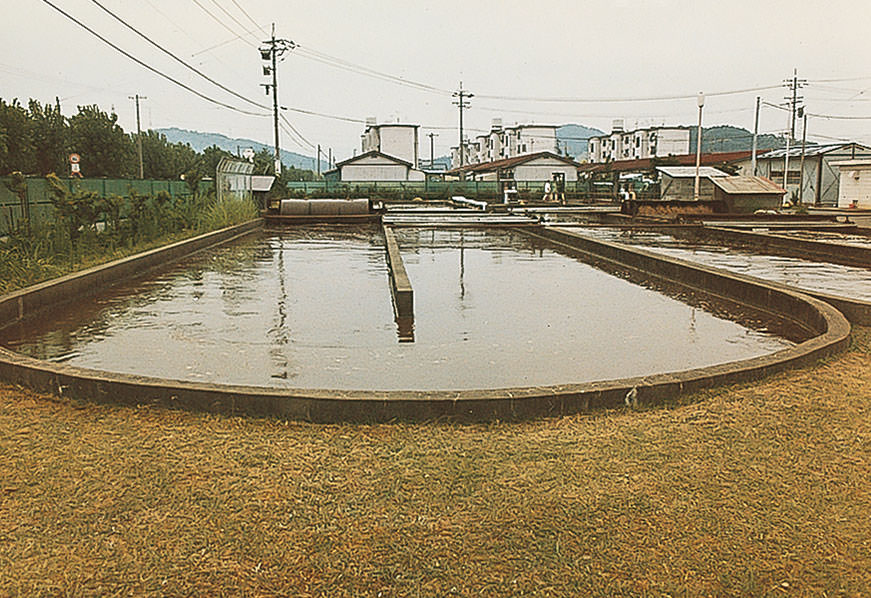 Small-scale wastewater treatment facility for a residential complex installed
Small-scale wastewater treatment facility for a residential complex installed
in Fukui City in 1965
Capitalizing on the Many Years of Developing Technology for Combustion Equipment, Kubota Developed and Built Urban Refuse Incinerators
Shortly after entering the water treatment industry, Kubota advanced to the municipal solid waste treatment market. Using the stoker technology based on the development of economizers and coal feeders in the Taisho era, Kubota developed their first mechanized batch incinerator and installed it in Aomori city in 1964. In 1968, Kubota constructed a continuous combustion incinerator, which burned 90 tons of solid waste per day and continuously operated for 24 hours a day in Gotemba City, Shizuoka. In the following year in 1969, by broadly developing its technology, Kubota released new treatment devices, such as the spouted bed sludge incinerator for treating the sludge that is produced during the wastewater treatment process. The company addressed environmental problems that became evident with exponential industrial development and increase in urban population, due to rapid economic growth.
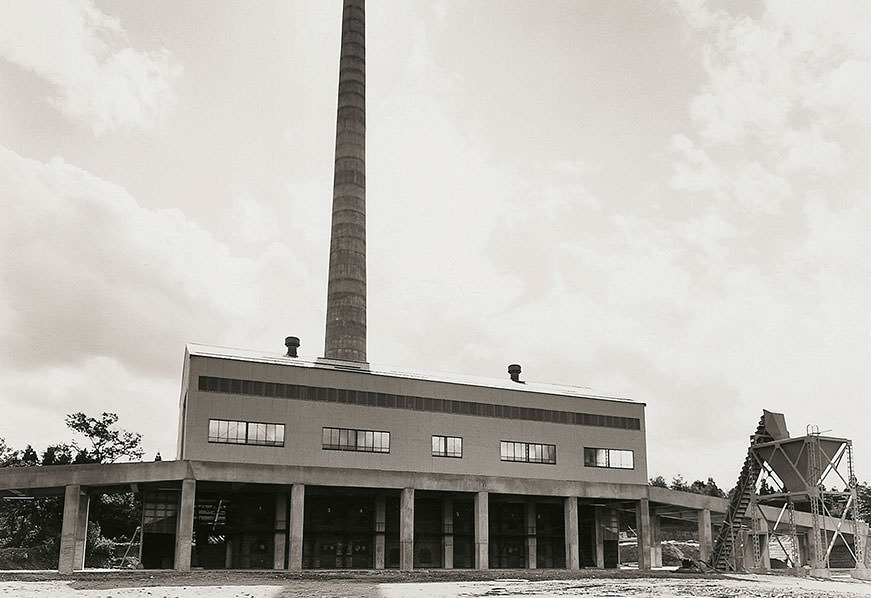 Kubota’s first refuse incineration plant installed in Aomori City
Kubota’s first refuse incineration plant installed in Aomori City
1960-1970s
The Repercussions of Rapid Growth and Measures Against Pollution
Concerns for environmental impact due to rapid economic growth developed into serious pollution issues. In 1967, the government issued the Basic Act for Environmental Pollution Control and, in 1970, radically laid out pollution-related ordinances at the National Diet’s 64th session, which was called the ‘pollution session.’ The industry, in turn, began to respond to strengthening regulations.
Scroll to See Next Story
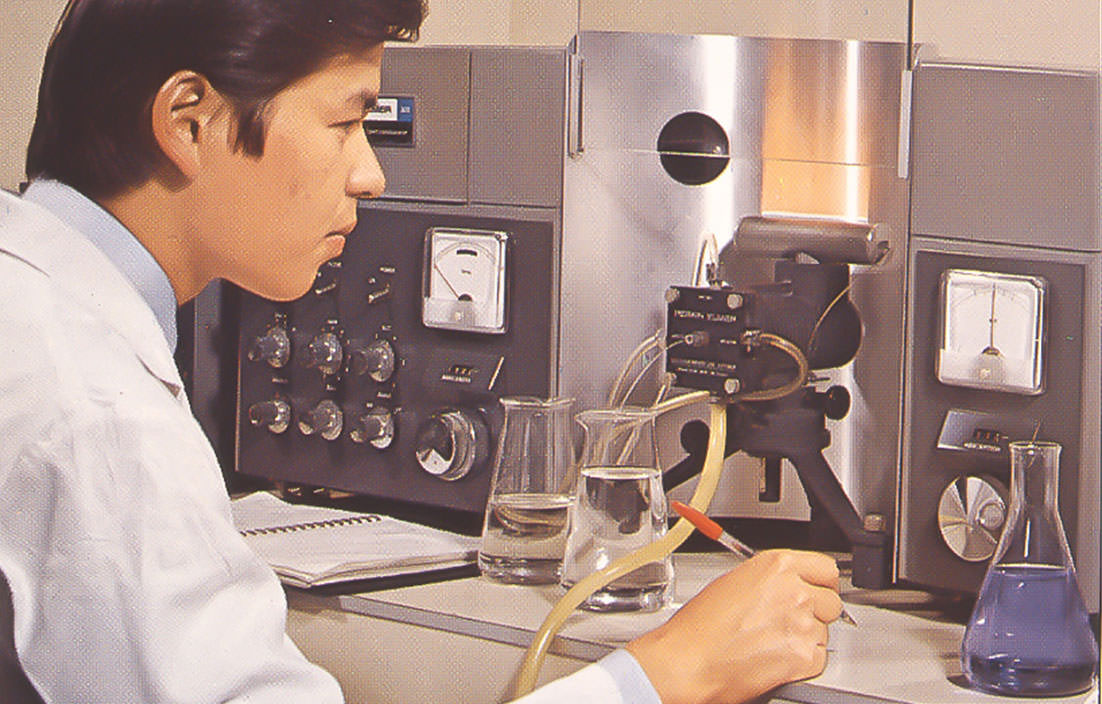
1960-1970s
Expansion of the Environmental Infrastructure-Related
Business Brought About Kubota’s Original Technology
Sludge Collector, Septic Tank
Conducting water quality analysis using an atomic absorption spectrometer
As the Japanese government strengthened environmental regulations, Kubota expanded its environmental infrastructure-related business. It started developing original water treatment devices and machines and officially entered the field of urban refuse incineration, capitalizing on its combustion technology cultivated since its founding. Kubota, who expanded its business domain, acquired new technology, in return.
In Order to Respond to the Pollution Crises, Kubota Revised Its Slogan and Expanded Its Business Domain to Include Environmental Infrastructure Development
Environmental pollution brought on by rapid economic growth became an imminent social issue. In response, the government strengthened pollution regulations by developing legislation under the Basic Act for Environmental Pollution Control issued in 1967 and establishing the Ministry of Environment. Not only industries but also local governments were required to take concrete measures. Kubota followed the tendency of improving environmental infrastructure and the revitalizing humanity, and expanded its business in environmental infrastructure, establishing a new slogan, “Create an environment affluent to human beings,” in 1969. In addition to the existing software-centered business development, Kubota created its own night soil and sewage treatment devices and machines and aimed to officially enter the field of urban refuse incineration.
Capturing the Latest Trend in Water Treatment Technology, Kubota Became the No. 1 Providerr of a New Treatment System
Around 1970, oxidative decomposition of night soil using aerobic microorganism (the aerobic microbe decomposition method) spread as a new method for water treatment. Unlike the conventional anaerobic microbe decomposition method, it did not release any corrosive gas, improving the plant’s durability and realizing high purification efficiency, among others. Kubota immediately adopted this method and, based on diligent research, became the no. 1 provider of oxidization treatment systems. In addition, responding to the needs for advanced processing, Kubota constructed a plant to conduct coagulating sedimentation and a facility equipped with a nitrogen removal unit. In time, the company expanded its business domain by developing its own wastewater treatment devices.
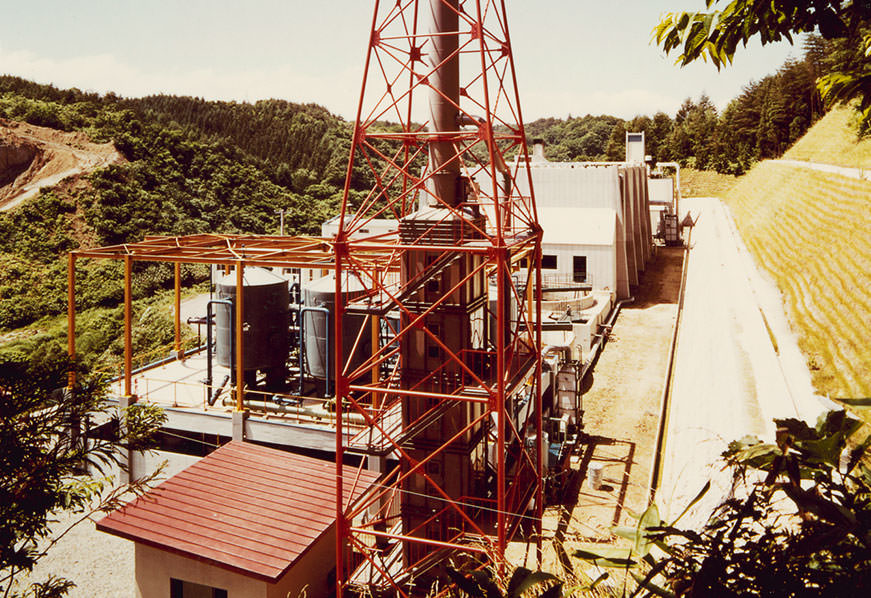 Sewage treatment plant equipped with a nitrogen removal unit,
Sewage treatment plant equipped with a nitrogen removal unit,
which Kubota built in Aomori City
Invented a New Combustion Equipment Capable of Dealing Properly with Japanese Waste
As the quality of living rose, not only did the amount of waste increase, but also its content diversified. Concretely, Japanese municipal solid waste (MSW), with lower heat value and larger specific weight due to higher water content than European waste, made it more difficult to burn. In order to solve this issue unique to Japanese waste, Kubota developed an original incinerator with the beak grate system (multiple-stage sectoral grate system) in 1972 In this system, each grate bar repeated 90-degree arc movement, turning over waste and carrying it down during inicineration, thus high combustion efficiency was achieved. Consequently, Kubota received repeat orders for larger incineration plants at the time
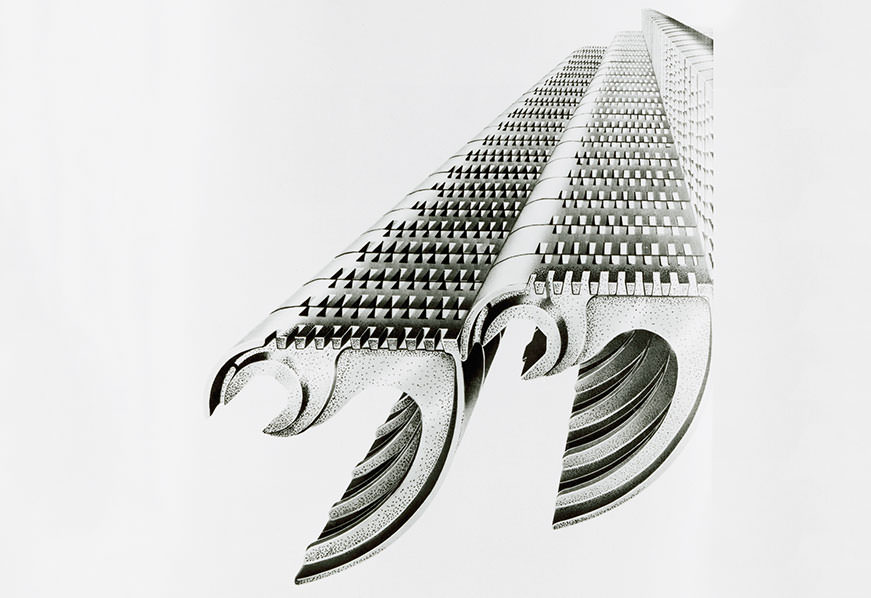 The beak grate system, which enhanced the combustion efficiency by turning
The beak grate system, which enhanced the combustion efficiency by turning
over waste during incineration
1970-1980s
Aiming to Expand the Coverage of Sewage System
Although urbanization and infrastructure development expeditiously progressed under rapid economic growth, at the end of the 1975 fiscal year, the sewage coverage in Japan was 23%, falling significantly behind US and European countries with over 70% of coverage. The government issued the 4th Five-year Sewer System Development Program, launching large-scale construction projects to improve coverage to 40%.
Scroll to See Next Story
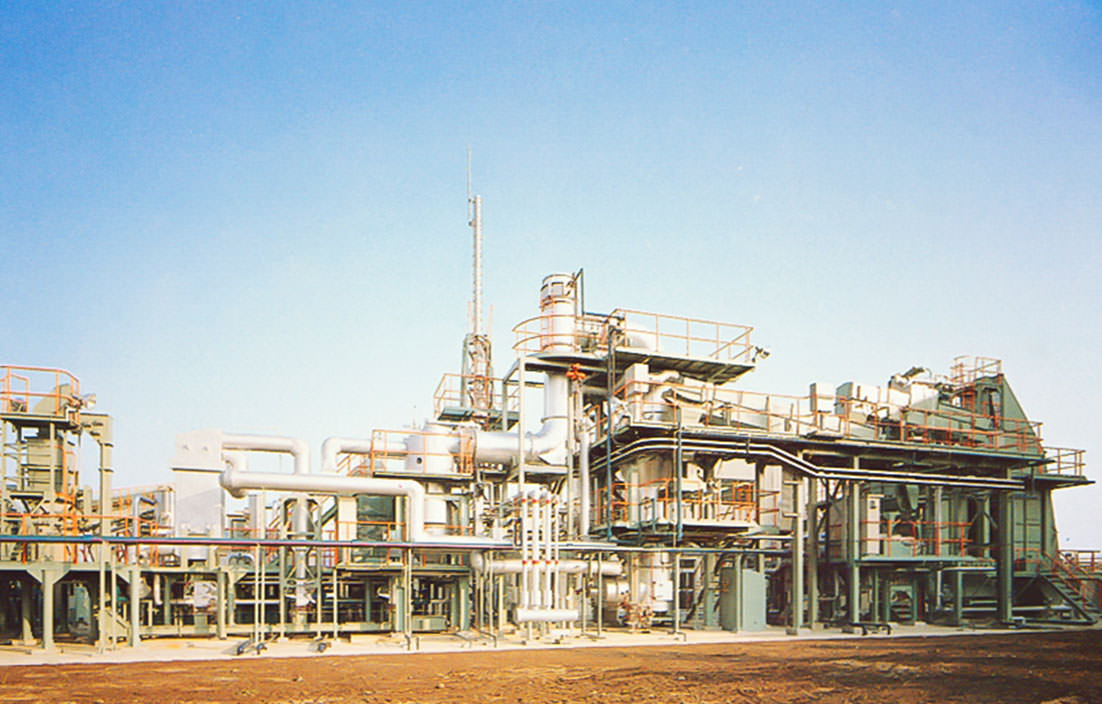
1970-1980s
Kubota Entered the Field of Sewage Sludge
Treatment to Enhance People’s Living Environment
Sludge Treatment, Wastewater Treatment, Drainage Treatment, Purified Water Treatment, Porous Bottom
Sludge combustion system to treat sludge that is produced in the process of wastewater treatment
In response to the government’s 4th Five-year Sewer System Development Program, Kubota changed course and expanded its wastewater treatment business. It separated the Environmental Equipment and Plant Engineering Division from the Water Treatment Division and focused on developing equipment and devices necessary in each process of treating wastewater, with the goal of enhancing Japan’s living environment through wastewater treatment.
Incorporating Sludge Treatment and Disposal, Kubota Established its Place as a Manufacturer of Integrated Wastewater Treatment Facilities
As wastewater treatment facilities operated throughout the country based on the government’s 4th Five-year Sewer System Development Program, the issue of treating and disposing of the sludge that is produced during the wastewater treatment process became apparent. Kubota immediately focused on this issue and, one after another, developed equipment necessary in the process of treating sludge, such as the vertical centrifugal thickener, sludge heat treatment apparatus, belt press filter, sludge melting furnace, etc. Local governments incorporated these new products, and Kubota, which had been mostly known for water treatment, started to be recognized as a manufacturer of integrated wastewater management systems, including sludge treatment.
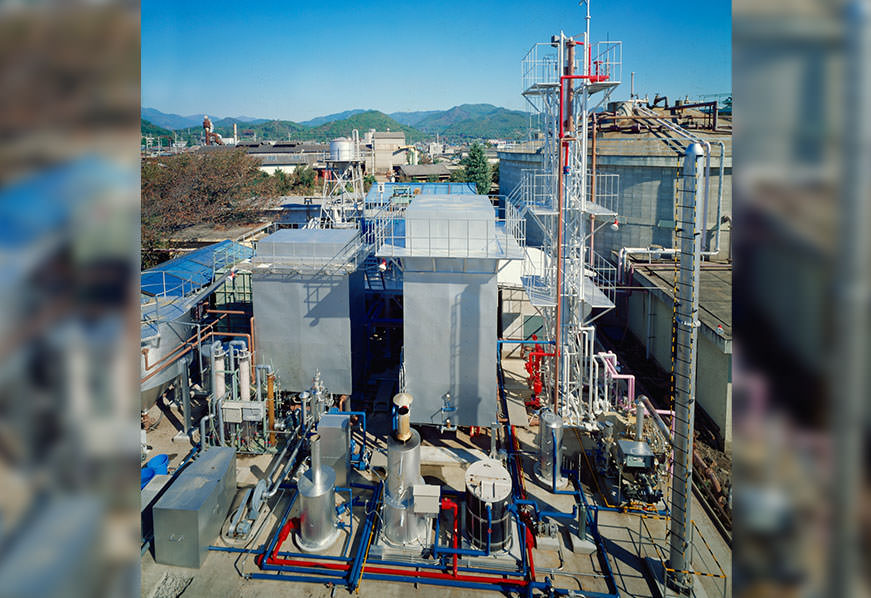 Thermal sludge processing unit
Thermal sludge processing unit
From Farming and Mountain Villages, Tourist Sites, to Overseas. Kubota’s Water Treatment Technology Contributing Abroad
Even in remote farming and mountain villages as well as tourist sites, where the public sewage system was not able to fully serve as it did in urban areas, small-scale wastewater treatment facilities started to spread around 1981. In response, Kubota developed highly advanced water treatment methods including the contact oxidation method and batch method, which required little space and were easy to maintain, and provided them to these areas. Furthermore, Kubota promoted its wastewater treatment facilities abroad and, starting with a project order from Taipei City in 1978, it received orders from Singapore and Indonesia. The export of wastewater treatment facilities was still a rare case in the industry back then.
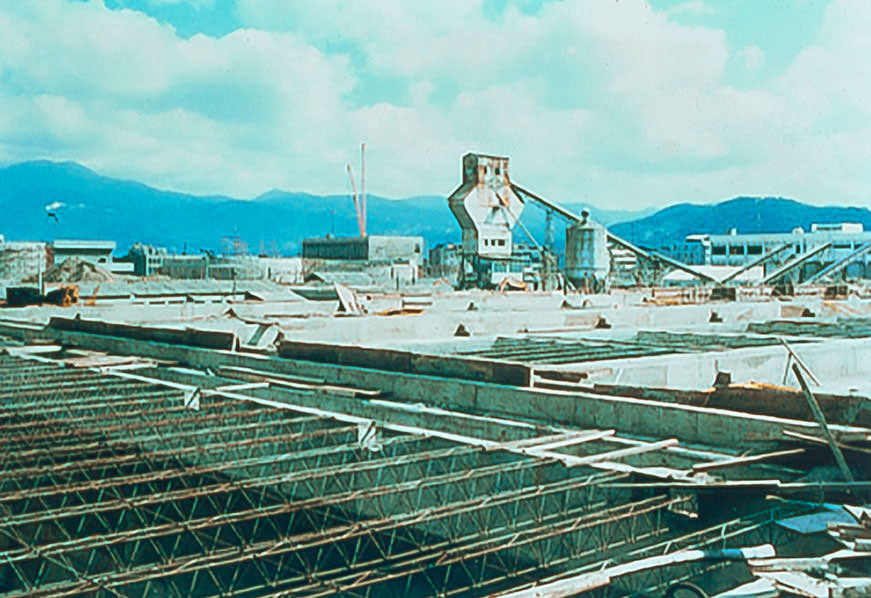 The first wastewater treatment plant Kubota received an order abroad
The first wastewater treatment plant Kubota received an order abroad
in Taipei City in 1978
The Coverage of the Water Supply System Reaches 90%. Kubota’s Technology Realized “Good-Tasting Tap Water”
In 1980, Kubota developed devices such as the filter press and sand filter, officially entering the water purification market. Around this time, the coverage of the water supply system surpassed 90%, and people sought for quality more than the quantity of water. In order to realize “good-tasting tap water,” Kubota focused on highly advanced treatment methods using ozone and activated carbon, and, in 1985, built a pilot plant within the Kunijima water purification facility in Osaka City. Around this time, the company also focused on the application of industrial wastewater and sewage treatment technologies as well as the development of landfill leachate treatment technology. It also led the industry in the field of effluent treatment facilities and established its position as the top provider.
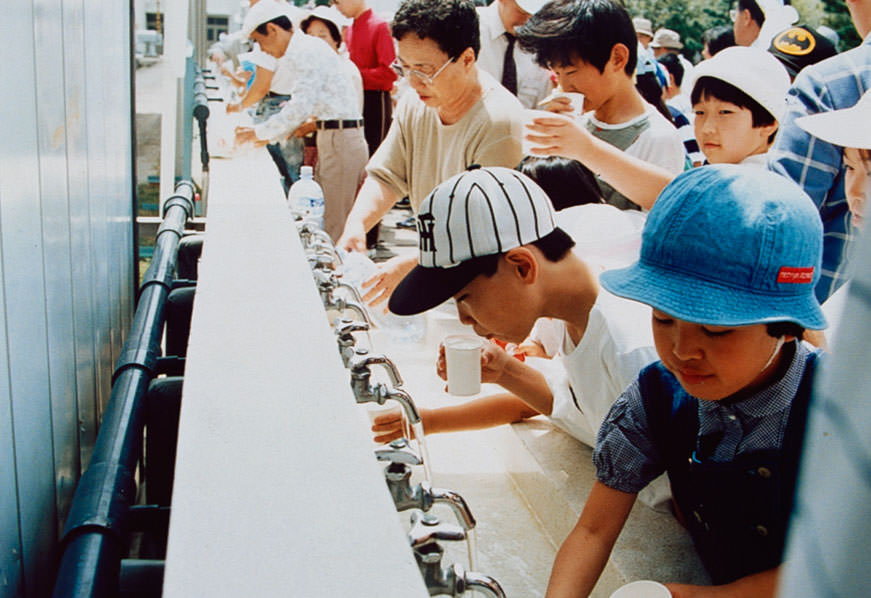 Taste test at the “good-tasting tap water” pilot plant built
Taste test at the “good-tasting tap water” pilot plant built
in the Kunijima water purification facility in Osaka City
(Photograph: courtesy of Osaka Water Municipal Waterworks Bureau)
“Permanently” Providing Good-Tasting Tap Water.
Opening the Door to the Era of Highly Advanced Water Purification
Kubota dramatically improved the quality of tap water through a highly advanced water purification process using ozone and active carbon. However, in order to permanently continue such highly advanced water treatment, there was room for technological improvement. Thus, Kubota developed an original underdrain system named "Kubota Porous Bottom" for activated carbon adsorption process. Cleansing with air and water at the same time, the device efficiently cleaned away contaminants, such as activated carbon, which accumulated on the filtering media, making good-tasting tap water readily available. Soon, “Kubota Porous Bottom” was used in 90% of the treated water using powder activated carbon, dominating the domestic market.
1990s-
Water Issues Taken to the Next Stage.
The Changing Environment Surrounding Water
From the 1990s, global environmental issues such as climate change became apparent, and humanity set out to find solutions to these problems. In Japan, the coverage of water supply and wastewater treatment services increased year by year, and the construction of new facilities, as well as the expansion of existing ones, had settled, entering into a time focused on facility updates and operation management.
Scroll to See Next Story
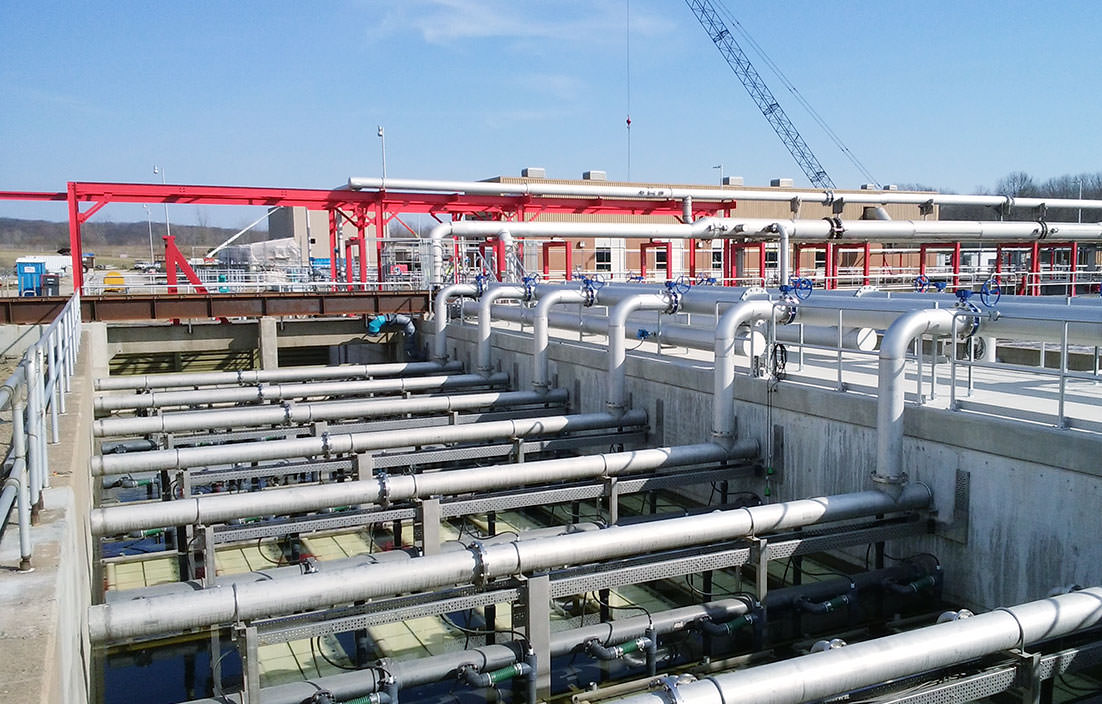
1990s-
Diverse Needs Required by the Changing Times Cultivated
Kubota’s Water Treatment Technology
KUBOTA Submerged Membrane Unit®, MBR, Rotary Surface Melting Furnace, Gravity Belt Thickener, KSIS
Water recalmation facility in Canton, Ohio. One of the largest MBR facilities Kubota built in North America
Kubota, which established a firm foothold in the water treatment industry, developed its technology and created innovative products in response to the diverse needs both domestic and abroad. Kubota is engaged in issues ranging from global climate change to domestic water problems, sincerely striving to provide solutions to each one.
Water Problems Solved by Reclaimed Water. Introducing the Organic Polymeric Membrane, “KUBOTA Submerged Membrane Unit®,” a Magical Technology that Created a “New Type of Water”
In 1991, Kubota released the organic polymeric membrane KUBOTA Submerged Membrane Unit® to efficiently utilize water resources by reclaiming commonly disposed effluent, which was neither drinking water nor wastewater. This membrane filtration unit used the micropore of the membrane to separate activated sludge from treated water. When combined with a biological treatment process in a “membrane bioreactor (MBR),” it did not require a settling basin, and as a result, reducing the size of treatment facilities. As an advanced effluent treatment technology that created “new, usable water,” the use of MBR widely spread to various factories and facilities.
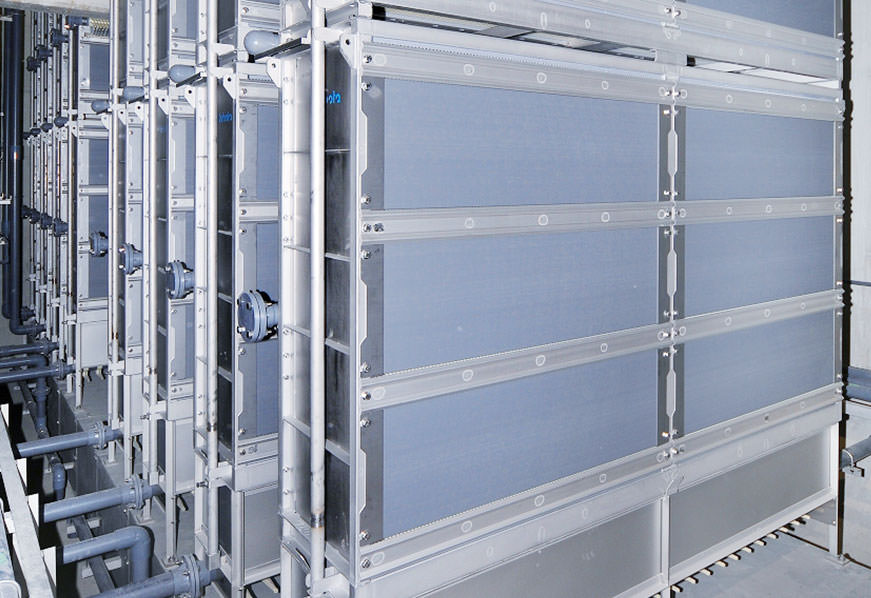 The KUBOTA Submerged Membrane Unit®, which enabled microfiltration
The KUBOTA Submerged Membrane Unit®, which enabled microfiltration
Actively Promoting KUBOTA Submerged Membrane Unit® Abroad, Drawing Attention from Europe as the Next Generation Wastewater Treatment Technology
Since the EU Directive on urban wastewater was issued, European countries sought for solutions to meet strict discharge regulations in beaches, estuaries, and bays. Kubota, which had its eyes fixed on the global market, installed a pilot wastewater treatment plant with KUBOTA Submerged Membrane Unit® in the British water company Wessex Water Services, Ltd. in 1998. In addition to its high treatment quality, its ease of control and maintenance as well as energy efficiency gained great reputation from across Europe as the next generation wastewater treatment technology. Based on this grounding, the company established Kubota Membrane Europe, Ltd. (KME) in London in 2001.
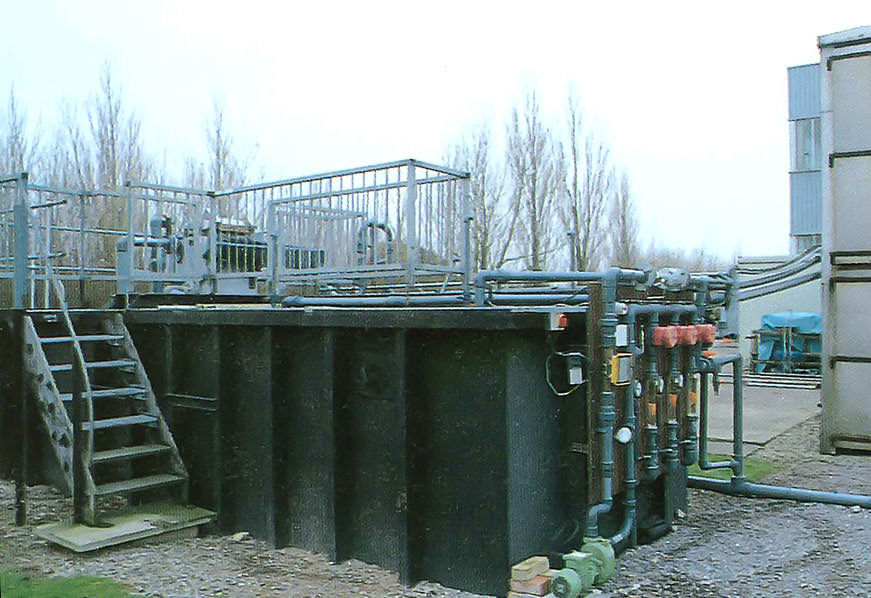 Pilot discharge treatment plant of Wessex Water Services, Ltd.,
Pilot discharge treatment plant of Wessex Water Services, Ltd.,
with KUBOTA Submerged Membrane Unit® inside
Progress is Made in the History of Japanese Wastewater Treatment. The First Large-Scale MBR Facility in Japan is Established
Based on the success in England, the interest in MBR increased around the world, and demand spread not only in Europe and North America but also in the Middle East and Asia. In Japan, due to power restrictions, the application of MBR was limited to small-scale wastewater treatment plants, however, Kubota created a large-scale, energy-efficient MBR plant in 2005. As the first MBR wastewater treatment facility, the Fukusaki Sanitation Center in Hyogo opened. In 2011, Kubota constructed the Sanbo Wastewater Treatment Facility in Sakai City, which was one of Japan’s largest, and, in 2013, installed one of North America’s largest MBR facilities in Canton Water Reclamation Facility in Ohio. Thus, Kubota’s MBR spread not only in Japan but also overseas.
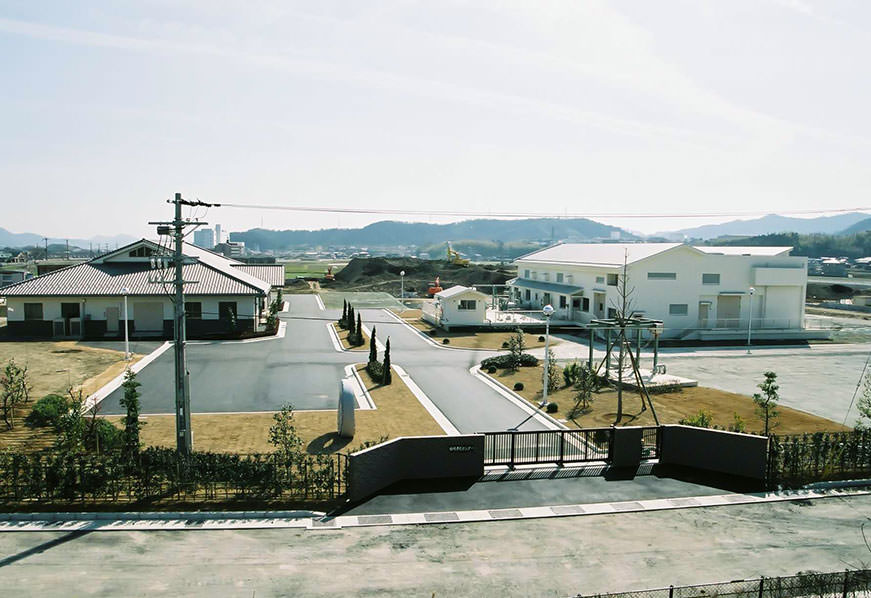 Fukusaki Sanitation Center, the first MBR wastewater treatment facility in Japan
Fukusaki Sanitation Center, the first MBR wastewater treatment facility in Japan
Contribution to Proper Disposal of Illegally Dumped Waste in Japan. Working with an Island Seeking Recovery
The illegal disposal of industrial waste in Teshima in the Seto Inland Sea became a serious social problem in the 1990s. In response, the Kagawa Naoshima Environment Center was established in the neighboring island of Naoshima, where the industrial waste began to be processed. Kubota’s rotating surface melting furnace plays an integral role at this center. The furnace is capable of processing many kinds of industrial garbage. Concretely, it destructs dioxins to detoxify, separates such metals lead and zinc from waste and condenses them for reuse. In addition, it turns the remaining ash to slug for useful applications. As part of Teshima’s recovery project to “not leave Teshima’s illegally dumped waste to future generations,” Kubota provides its solid waste processing technology.
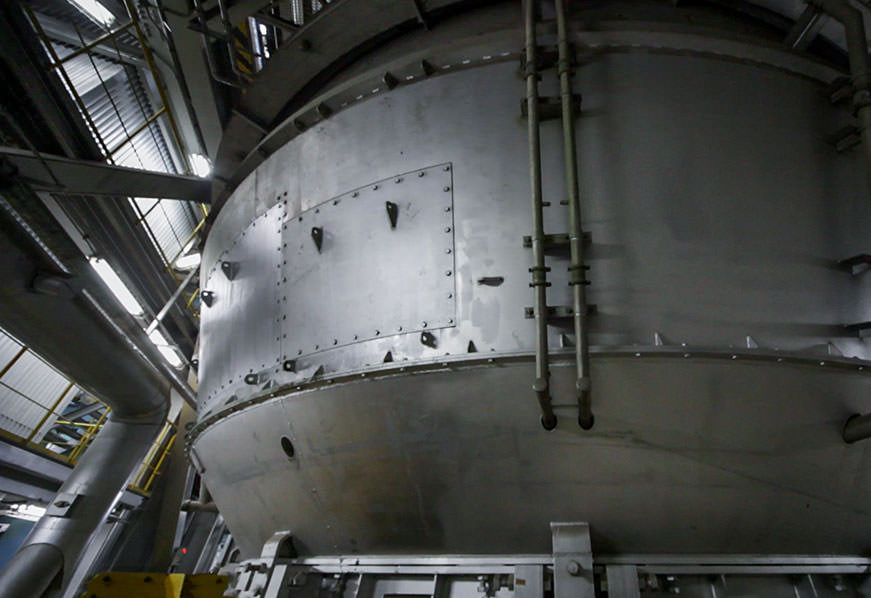 Kubota’s rotating-surface melting furnace, which operates over 300 days in a year
Kubota’s rotating-surface melting furnace, which operates over 300 days in a year
“Friendly to the People, Environment, and Economy”—Pursuing the Ultimate Technology for Realizing Energy-Efficiency, Compact Size, and Low Cost
Amid various restraints, such as limited resources and budget as well as increasingly strict environmental regulations, the construction of new facilities and equipment is not easy, and recent demands have shifted to renewals and operation management. With the aim of improving maintenance, Kubota created a gravity belt thicker made with a stainless belt, which helped reduce cost. Realizing excellent energy-efficiency and high degrees of compression and recovery, the belt filter press efficiently processed sludge in a short amount of time, and its small main power resulted in low CO2 emission. It enabled the reduction of construction as well as maintenance cost, efficient use of space, and stable, long-term operation with superior durability.
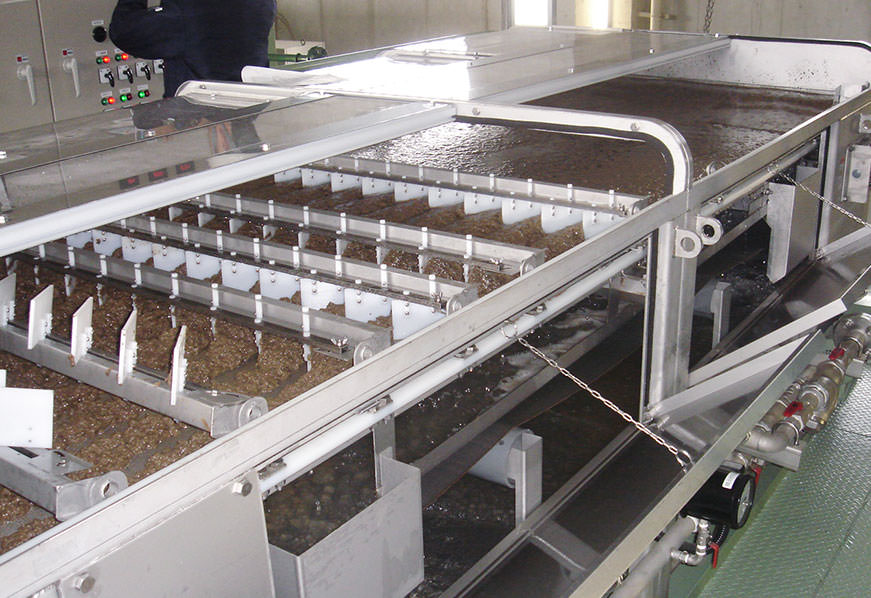 Sludge is compressed using a stainless belt with superior filtration performance
Sludge is compressed using a stainless belt with superior filtration performance
Kubota’s Half-Century of Knowhow Combined with IoT. Launching KSIS—A Total Solution to the Water Resource Infrastructure
In 2017, Kubota drew on its water processing technology developed over half a century and released the new Kubota Smart Infrastructure System (KSIS), which integrated its product, plant equipment, system, and after-sales services. Applying IoT to all its water resource and environmental infrastructure, KSIS monitors and diagnoses devices and provides overall support, including maintenance. It is a next generation solution made possible by Kubota, which has overseen its water resource and environmental facilities through its unique system, employing 5,000 remote monitoring systems and 10,000 communication devices.
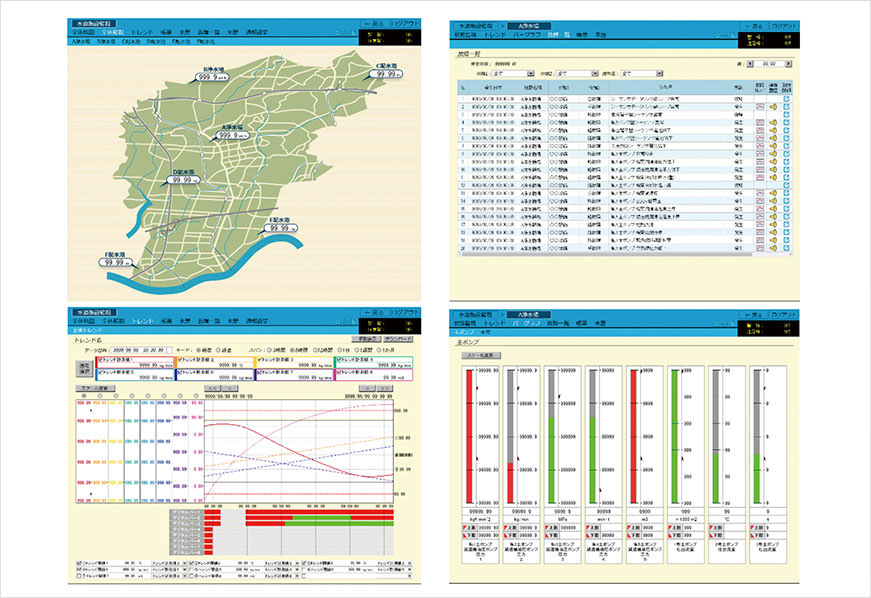 Image of KSIS monitoring screen with water levels, flow volume, etc.
Image of KSIS monitoring screen with water levels, flow volume, etc.
Safe Water for 7 Hundred Million People Around the World. Spreading the Water Processing Technology that Sustained the Japanese People
Kubota has contributed to Japan’s world-class water resource infrastructure with its advanced water treatment technology. However, when we look at our world today, there are still seven hundred million people without access to clean water. Kubota, which has been earnestly engaged in water issues over the years, will stand by those struggling to get clean water, and will continue to address the world’s water problems with the water treatment technology it has developed.
